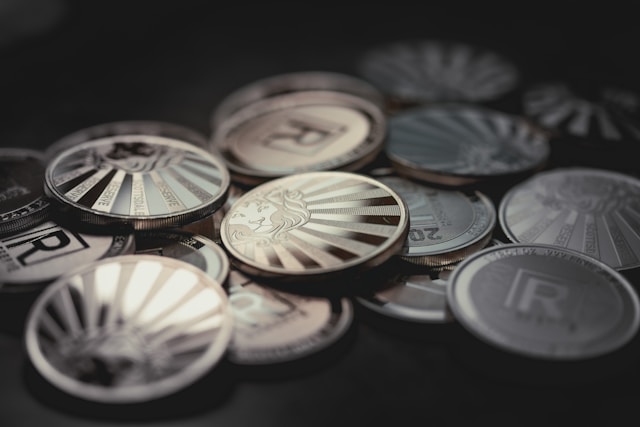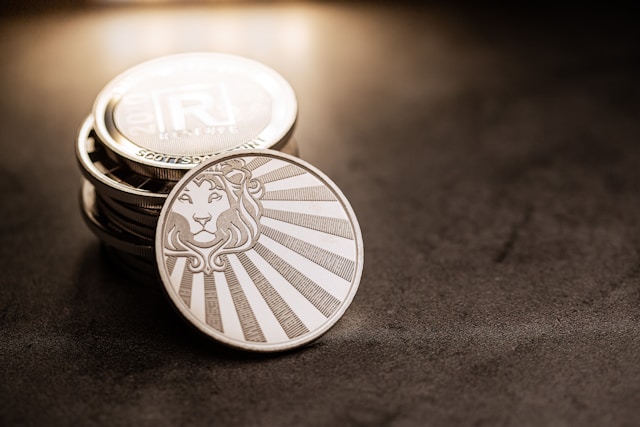Silver, the lustrous metal that has captivated investors for centuries, is often seen as a gateway to wealth and financial security. Its undeniable allure lies in its timeless beauty and potential for exponential growth. However, beneath its shimmering surface lie hidden pitfalls and hurdles that can trip up even the most seasoned investor. In this comprehensive guide, we will delve into the world of silver investing, uncovering its treacherous paths and revealing strategies to navigate them successfully.
Price Volatility and Market Fluctuations
 One of the primary challenges of investing in silver is its inherent price volatility. Various factors, including economic indicators, geopolitical events, and currency fluctuations, influence the silver market. Unlike some other investment assets, silver prices can experience significant swings, creating both opportunities and risks for investors.
One of the primary challenges of investing in silver is its inherent price volatility. Various factors, including economic indicators, geopolitical events, and currency fluctuations, influence the silver market. Unlike some other investment assets, silver prices can experience significant swings, creating both opportunities and risks for investors.
Staying informed about market trends and having a solid risk management strategy is crucial when navigating the volatile nature of silver prices. Although most investors buy silver bars because of their intrinsic value, it is important to remember that the market can experience significant fluctuations in the short term.
Industrial Demand and Economic Conditions
Silver has diverse applications beyond being a precious metal, with a significant portion of its demand coming from industrial uses. This dual nature as both a precious and industrial metal makes silver susceptible to economic downturns. During periods of economic instability, reduced industrial demand for silver can impact its price. Investors in silver need to consider not only market factors but also the broader economic conditions that may influence the metal’s value.
Storage Costs and Security Concerns
Unlike some financial instruments that exist in digital form, physical silver requires proper storage. Storing silver securely can incur costs whether you choose a safe deposit box, a private vault, or another storage solution. Investors must factor in these storage costs when calculating the overall return on their investment. Additionally, ensuring the security of your physical silver holdings is paramount, as theft or damage can pose significant challenges.
Liquidity Challenges in Smaller Markets
Compared to gold, silver has a smaller market size, which can result in liquidity challenges. During times of market stress or uncertainty, selling large quantities of silver may be more challenging than liquidating gold or other assets. Investors need to be aware of potential liquidity issues and plan their investment strategy accordingly, especially if they anticipate needing to convert their silver holdings into cash quickly.
Counterparty Risks With Paper Silver Investments
Investors can choose to invest in silver through various instruments, including physical bullion, exchange-traded funds (ETFs), or futures contracts. However, paper silver investments carry counterparty risks. When opting for derivatives or ETFs, investors rely on the financial stability and integrity of the issuing institution. Understanding the counterparty risks associated with different silver investment vehicles is crucial to making informed investment decisions.

Regulatory and Tax Considerations
Investors in silver, like any other asset class, need to navigate regulatory and tax landscapes. Different jurisdictions may have varying regulations regarding the buying, selling, and storage of precious metals. Additionally, taxes on capital gains from silver investments can impact overall returns. Staying informed about relevant regulations and seeking professional advice is essential to ensure compliance and maximize the benefits of silver investments.
While investing in silver can be an appealing strategy for diversification and wealth preservation, it comes with its share of challenges. Navigating price volatility, understanding the dual nature of silver as both a precious and industrial metal, and addressing storage and security concerns are critical aspects of investing in silver. Liquidity challenges, counterparty risks in paper silver investments, and regulatory considerations further add complexity to the silver investment landscape.

